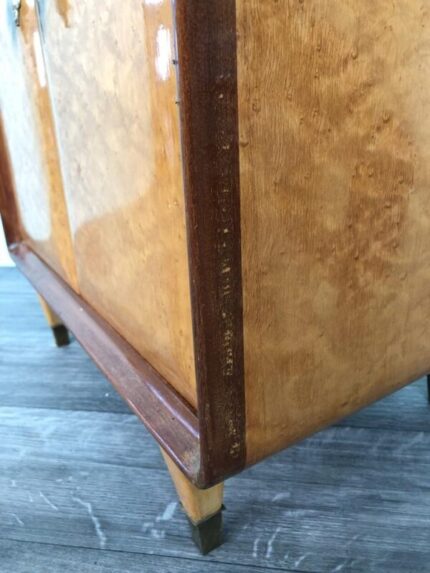Carved Antique African Leopard Ashanti Style Stool.
Early 20th Century Ghanaian Ashanti style leopard stool.
Animal leopard stool hand-carved wood from Ghana.
This is the “OSEBO GWA” ( The Leopard stool ).
Stools indicated power, status, and lines of succession in traditional Ashanti culture. The platform base, curved seat, and ridged supports reference this as an Ashanti King stool. In Ashanti culture, leopards were symbols of fierce power. King stool form supported by a leopard mark this as a leader’s stool. Animal representations were frequently gestural, relying on basic shapes and a sense of movement to evoke the spirit of the intended animal
Used during ceremony by the important royal Akan family. The leopard is a symbol of strength, stealth, and expert hunter.
This has distinct signs of extensive use on the underside of the curved sides where it was frequently gripped. The leopard in Akan society is associated with the king or chief because this powerful predator can see in the dark, it can travel easily and stealthily from the upper world of trees to the middle world of earth, and it can swim in the underworld of water. This is a wonderful Cubist sculpture of the animal, giving the leopard a friendly, noble bearing, the thick legs and strong neck convey a sense of strength and stability, virtues associated with the royal person who may have owned this. Hand-carved from a single piece of wood. This unique stool
Early 20th Century Ghanaian Ashanti style leopard stool.
Animal leopard stool hand-carved wood from Ghana.
This is the “OSEBO GWA” ( The Leopard stool ).
Stools indicated power, status, and lines of succession in traditional Ashanti culture. The platform base, curved seat, and ridged supports reference this as an Ashanti King stool. In Ashanti culture, leopards were symbols of fierce power. King stool form supported by a leopard mark this as a leader’s stool. Animal representations were frequently gestural, relying on basic shapes and a sense of movement to evoke the spirit of the intended animal
Used during ceremony by the important royal Akan family. The leopard is a symbol of strength, stealth, and expert hunter.
This has distinct signs of extensive use on the underside of the curved sides where it was frequently gripped. The leopard in Akan society is associated with the king or chief because this powerful predator can see in the dark, it can travel easily and stealthily from the upper world of trees to the middle world of earth, and it can swim in the underworld of water. This is a wonderful Cubist sculpture of the animal, giving the leopard a friendly, noble bearing, the thick legs and strong neck convey a sense of strength and stability, virtues associated with the royal person who may have owned this. Hand-carved from a single piece of wood. This unique stool
-
Dimensions:Height: 14.5 in (36.83 cm)Width: 22 in (55.88 cm)Depth: 10.5 in (26.67 cm)Seat Height: 14.5 in (36.83 cm)
-
Style:Folk Art(In the Style Of)
-
Materials and Techniques:WoodHand-CarvedHand-Crafted
-
Place of Origin:Ghana
-
Period:Mid-20th Century
-
Date of Manufacture:1950
-
Condition:FairRefinished. Wear consistent with age and use. Minor structural damages. Some wear, cracks, damages due to age and usage please see photos or ask questions.
-
Seller Location:North Hollywood, CA
-
Reference Number:Seller: GSA1022Seller: LU906830847512
Reviews (0)



























































Reviews
There are no reviews yet.